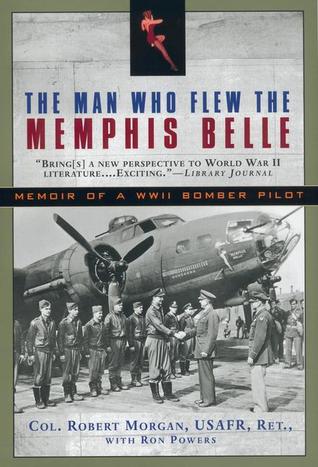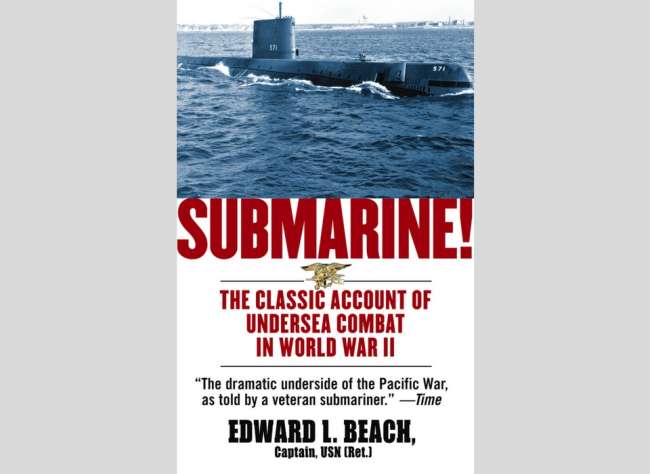Top image: B-17s featured in videos in the "Air War" gallery at The National WWII Museum.
“Maj. Harold Smelser, my spit and polish nemesis, was piloting one of the B-17s as Squadron Commander of the 91st group. The Germans shot out two of his engines. Instantly his plane, Pandora’s Box, began to lose altitude. The bombers around him slowed down to cover him in order to keep him enveloped within their tight formation. From his cockpit, Major Smelser vigorously waved them on. He kept dropping, dropping. He dropped until his plane melted into the fog-blanket below. It was the last he, or it, were ever seen.
“I thought differently about the Major’s martinet attitude after that. The man had taken a personal dislike to me, refused to promote me, hazed me a little, and held me to the strictest guidelines of the military code, but when it came to the moment of truth, he held himself to the same strict standards. He died valiantly. I’ve sort of missed that swagger stick of his ever since.”
Col. Robert K. Morgan, The Man Who Flew the Memphis Belle: Memoir of a WWII Bomber Pilot, p. 124-125.
Memphis Belle has been an iconic symbol of World War II ever since the war itself, when the plane and her crew were celebrated as the first B-17 bomber from the Mighty Eighth Air Force to complete 25 missions in May, 1943, and return to the United States (subsequent scholarship has credited Hell’s Angel with actually completing 25 missions two days beforehand). In dark days, the Memphis Belle became a symbol of progress, inspiration, and hope. At a time when young men were being shot from the skies at a rate that showed it was statistically impossible to survive, the Memphis Belle did. She and her crew gave other bomber crews hope that they, too, could survive the war. They gave Americans back on the Home Front evidence that our might in the air was growing, and inspiration that the war could be won. The story of the plane named for Margaret Polk, a pretty 19-year-old brunette from Memphis, and her romance with the young pilot Robert K. Morgan, consumed the news media of the day. The subject of a Hollywood movie made during the war by Oscar-winning director William Wyler, as well as a later 1990 feature film, the Memphis Belle went on permanent display at the National Museum of the US Air Force in Dayton, Ohio, beginning on May 17, 2018—exactly 75 years after she completed her 25th mission over Europe. The Memphis Belle remains a lasting symbol of the WWII generation.
What makes the story of the Memphis Belle fascinating is that there are many tragic aspects in the real story: reality did not have a Tinsel Town ending. Although Margaret Polk’s photograph taped in the cockpit guided Robert Morgan home again, the pressures of the media and the public role that Morgan was expected to play for the war effort ultimately kept the young couple from marrying. Although his duty had been completed and he was now safe at home, the constant presence and strain from the unrelenting war intervened in Morgan’s life, driving him in unpredictable directions. Morgan would not only break up with Polk, but promptly married a different woman, Dorothy—and then left her to again go back into combat, flying B-29s against the Japanese home islands from Saipan.
In his 2001 memoir (written with Ron Power), Colonel Robert K. Morgan told the story of how his life intersected with the plane Memphis Belle over decades. But what I found most interesting in Morgan’s account was not the story of the 25 missions he and the Belle flew together—although that was deeply interesting—but the elements in the story that were outside his relationship with the plane and its crew.
As I write this on July 31, 2018, it is the 100th anniversary of the birth of Robert K. Morgan in Asheville, North Carolina. Morgan was quite a free spirit. In telling the story of his young life, Morgan describes an American boyhood of sports, outdoor life, and fascinations with music and radio technology that is still recognizable and relatable to later generations, even children today. As a boy, Morgan was close to his mother Mabel, and the two of them talked of traveling to Europe together one day. In his teenage years, tragedy occurred when Morgan’s mother committed suicide, an event to which he attributed his lifelong need for female companionship and approval. Amidst his many love affairs, there were two short marriages before he embarked upon his whirlwind romance with Margaret Polk of Memphis, Tennessee and headed off to Europe alone at age 23.
What stands out is the need for discipline that this typical, passionate young American man had, and what makes his life and the above passage unforgettable is how war and military life began to implement that discipline in his mind. Morgan was known for “buzzing” airfields, and this habit had drawn the displeasure of his commanding officer, Major Smelser. As noted in the passage, Smelser hazed Morgan and blocked his career advancement in the military because Morgan was a freewheeling pilot. Right after the above passage, Morgan relates how not one but two promotions for him were found in Smelser’s desk that Smelser had refused to give to Morgan.
But that is what makes the above passage unforgettable. As Morgan relates, even though he clearly disliked Smelser to that point, his conflict faded at the moment of truth in combat when he witnessed Smelser living by the code of military discipline and professionalism, waving on the rest of the formation so that they might live to fight another day, even at the cost of his own life. For a young man at war, this encounter with courage and mortality no doubt left another mark on him. Morgan and the Memphis Belle were among the first to survive 25 missions, and he returned home to challenges that he could not have imagined from the days he saw other crews and planes lost in the sky. These new challenges will be the subject of my next post.
This is the first of three post on Morgan's memoirs. Read Part Two. Part Three.

“A place can evoke the history that occurred there, but through words our minds truly gain perspectives and understanding of what it was like to know, feel, experience, hope, fail, triumph, and live through events from which we ourselves were absent. The written word is our most intricate map to retrace and reconstruct what we think happened, and ultimately brings us back to ourselves.”
– Keith Huxen, PhD , Senior Director of Research and History, The National WWII Museum
Keith Huxen
Keith is the former Senior Director of Research and History in the Institute for the Study of War and Democracy at The National WWII Museum.
Cite this article:
MLA Citation:
APA Citation:
Chicago Style Citation:









![Max Fuchs, New York City cantor, sings as Rabbi Sydney [sic] Lefkowitz, Richmond, VA, conducts the first Jewish services from Germany.](/sites/default/files/styles/max_650x650/public/2025-10/image1.jpg)



